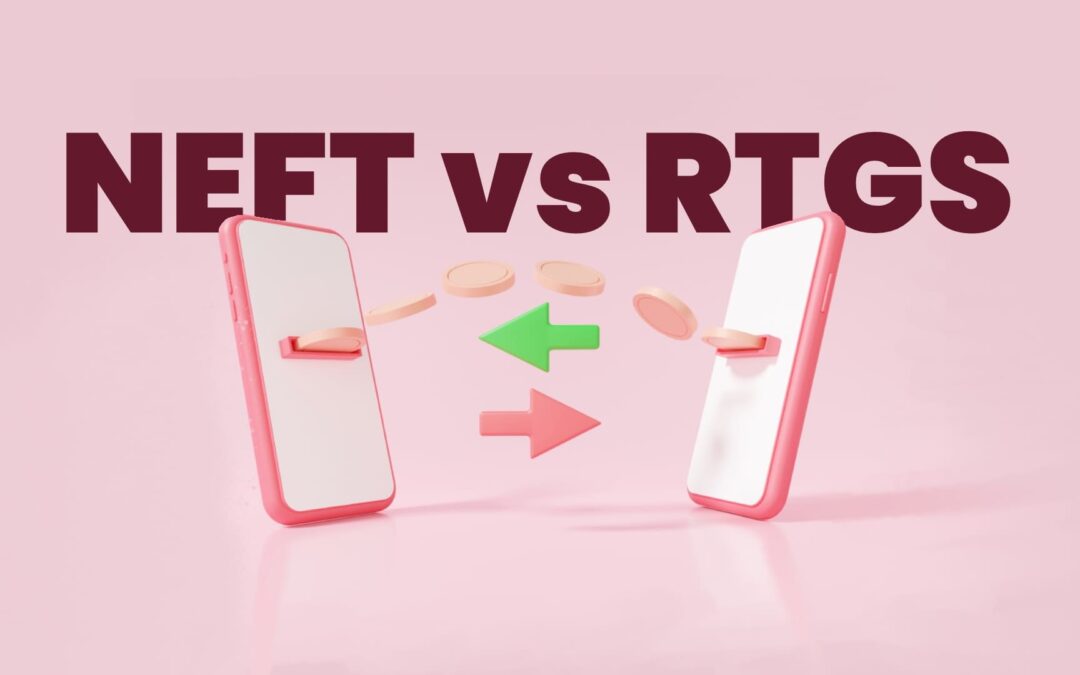When it comes to making payments for goods and services, there are two popular payment methods available: Real Time Gross Settlement (RTGS) and National Electronic Funds Transfer (NEFT).
Both of these payment methods have their own advantages and disadvantages, so it’s important to understand the difference between them in order to make sure you get maximum benefit from your transaction.
In this article, we will compare RTGS vs NEFT, discuss the features of each payment method, analyze its pros and cons, provide guidance on how to choose the right method for your particular transaction as well as tips on how to make the most out of both RTGS and NEFT payments.
Differentiating RTGS and NEFT
1. RTGS vs NEFT – Transaction Time:
RTGS transfers are completed instantly, while NEFT transfers take up to 2-3 hours to complete.
This means that with RTGS transactions, the sender and beneficiary can expect the funds to be in their respective accounts almost immediately.
On the other hand, with NEFT transfers, the recipient can expect to receive the funds within a few hours.
2. RTGS vs NEFT – Transaction Limits:
RTGS transfers have no upper limit, whereas NEFT transfers are limited to INR 2 lakhs (or its equivalent).
This makes RTGS an ideal choice for large-value payments, while NEFT is a better option for smaller-value payments.
3. RTGS vs NEFT – Cost:
RTGS transfers are more expensive than NEFT transfers, with the latter often being free of charge.
This is because RTGS transactions involve more steps and involve more people in the settlement process, which increases its cost.
On the other hand, NEFT transfers are simpler and cheaper due to its fewer steps.
4. RTGS vs NEFT – Security:
When it comes to security, both the payment methods have been designed with advanced systems in place for secure transactions.
That being said, RTGS transfers are slightly more secure since they involve multiple layers of authentication which increases the protection of funds being transferred.
What to Consider before choosing NEFT or RTGS?
1. Consider the transaction amount:
RTGS is ideal for large-value payments whereas NEFT is better suited for smaller-value transactions.
If you need to transfer an amount that is larger than INR 2 lakhs, then RTGS would be your best option as it does not have any upper limit.
2. Consider the urgency of the payment:
If you need to transfer funds quickly, then RTGS would be a better option since it provides near-instant transfers.
On the other hand, if your transaction is not time-sensitive and can wait for a few hours, then NEFT could be a better choice as it often comes with no or low fees.
3. Consider the cost of transfer:
RTGS transfers are more expensive than NEFT transfers, so it’s important to factor in the cost when deciding which payment method to use.
If you need to transfer large amounts and the urgency is high, then RTGS would be a good choice even with the higher cost.
On the other hand, if you are transferring smaller amounts or there is no immediate need for the funds, then NEFT would be a better option since it often comes with no fees.
Conclusion
RTGS and NEFT are two popular payment methods that offer different benefits depending on the transaction amount, urgency of the payment, and cost.
RTGS is ideal for large-value payments with near-instant transfers while NEFT is better suited to smaller-value transactions which can wait a few hours before being processed at no or low fees.
By understanding the difference between these two payment methods and considering factors such as time sensitivity, transaction limits, and cost when making decisions about your payments strategy you’ll be able to get maximum benefit from both RTGS and NEFT!

